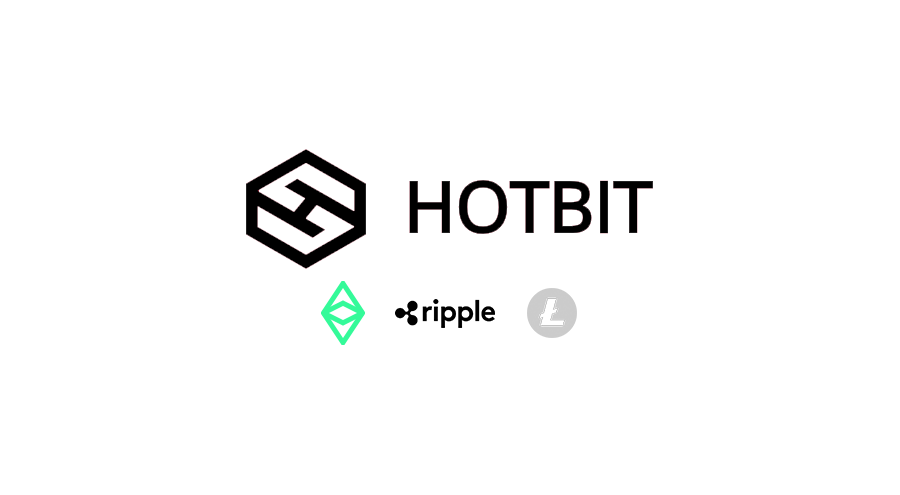While covering over 100 blockchain assets on their exchange, crypto exchange Hotbit will now list Ethereum Classic (ETC), Ripple (XRP), and Litecoin (LTC) starting Thursday, November 1st.
ETC, XRP, and LTC will be officially set up for deposit starting 10/31 16:00 (UTC+8), and for transactions starting on 11/1 15:00 (UTC+8), the new listings will be available in BTC and ETH transactions.
Over the last 24 hours, Hotbit’s most popular markets include, Ethereum, Nexo, Content Box, HOQU, Sharder, PundiX, and Fusion. Hotbit is ranked around the 50th largest exchange in terms of volume, with 5,336 BTC traded in the last 24 hours.
Overview ETC, XRP, LTC
Ethereum Classic (ETC)
Ethereum Classic is an open-source, public, blockchain-based distributed computing platform featuring smart contract (scripting) functionality. It provides a decentralized Turing-complete virtual machine, the Ethereum Virtual Machine (EVM), which can execute scripts using an international network of public nodes. Ethereum Classic also provides a value token called “classic ether”, which can be transferred between participants, stored in a cryptocurrency wallet and is used to compensate participant nodes for computations performed. The classic ether token is traded on cryptocurrency exchanges under the ticker symbol ETC. Gas, an internal transaction pricing mechanism, is used to prevent spam on the network and allocate resources proportionally to the incentive offered by the request.
The Ethereum platform has been forked into two versions: “Ethereum Classic” (ETC) and “Ethereum” (ETH). Prior to the fork, the token had been called Ethereum. After the fork, the new tokens kept the name Ethereum (ETH), and the old tokens were renamed Ethereum Classic” (ETC). Ethereum Classic appeared as a result of disagreement with the Ethereum Foundation regarding The DAO Hard Fork. It united members of the Ethereum community who rejected the hard fork on philosophical grounds. Users that owned ETH before the DAO hard fork (block 1920000) owns an equal amount of ETC after the fork.
Ripple (XRP)
RippleNet delivers a single, frictionless experience for global payments. Rather than a constellation of disparate technologies, unstandardized communications, and centralized networks, RippleNet is a single, global network of banks that send and receive payments via Ripple’s distributed financial technology — providing real-time messaging, clearing and settlement of transactions.
RippleNet is a decentralized network based on an agreement between Ripple and network participants — all of which utilize the same technology and adhere to a consistent set of payment rules and standards. RippleNet banks benefit from robust connectivity, standardized technology, and rich data attachments with each payment. Ripple’s distributed financial technology outperforms today’s infrastructure by driving down costs, increasing processing speeds and delivering end-to-end visibility into payment fees, timing, and delivery.
XRP is the native currency of the Ripple network that only exists within the Ripple system. XRP are currently divisible to 6 decimal places, and the smallest unit is called a drop with 1 million drops equaling 1 XRP. There were 100 billion XRP created at Ripple’s inception, with no more allowed to be created according to the protocol’s rules. As such, the system was designed so XRP is a scarce asset with decreasing available supply. Not dependent on any third party for redemption, XRP is the only currency in the Ripple network that does not entail counterparty risk, and it is the only native digital asset. The other currencies in the Ripple network are debt instruments (i.e. liabilities) and exist in the form of balances. Users of the Ripple network are not required to use XRP as a store of value or a medium of exchange.
Litecoin (LTC)
Litecoin is a peer-to-peer Internet currency that enables instant, near-zero cost payments to anyone in the world. Litecoin is an open source, global payment network that is fully decentralized without any central authorities. Mathematics secures the network and empowers individuals to control their own finances. Litecoin features faster transaction confirmation times and improved storage efficiency than the leading math-based currency. With substantial industry support, trade volume and liquidity, Litecoin is a proven medium of commerce complementary to Bitcoin.
Litecoin was released via an open-source client on GitHub on October 7, 2011, by Charlie Lee, a former Google employee. The Litecoin network went live on October 13, 2011. It was a fork of the Bitcoin Core client, differing primarily by having a decreased block generation time (2.5 minutes), increased maximum number of coins, different hashing algorithm (scrypt, instead of SHA-256), and a slightly modified GUI. In May 2017, Litecoin became the first of the top-5 (by market cap) cryptocurrencies to adopt Segregated Witness.



















